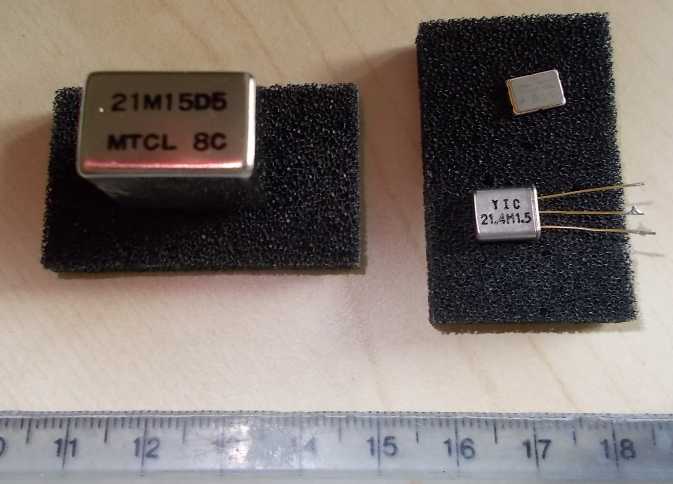
21.4MHz crystal filters
1st June 2022
Recently I had occasion to want to build an RF receiver which was going to use an IF of 21.4MHz for an AM voice-bandwidth channel. Casting around, I discovered lots of sources of 21.4MHz crystal filters on, of course, eBay. These were mostly evidently surplus stock and often were pretty cheap, but the vendors rarely gave much away as far as specifications went. But a bit of work with a search engine quickly threw up enough in the way of datasheets that I could get a good idea of what to expect.
At the same time, I thought I'd use my trusty spectrum analyser/tracking generator with a lashed-up test jig to see whether the devices I obtained actually gave something like the expected results. Here's a picture of the three different units I've been looking at:

And here are the links to the eBay vendors' pages (they all arrived in the same post, within a couple of days of ordering, so I can be complimentary about each vendor). Also the data for what looks like the actual part, or perhaps a near equivalent.
TM7050C: MF21RS surface mount 2-pole
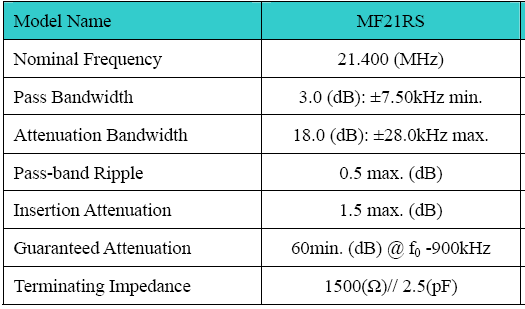
YIC: 21.4M1.5 UM1 3-pin 2-pole: the B version is two units cascaded

MTCL 21M15D5 screened can, 8 pole

The schematic of the jig which has been used for the following plots is shown here. Note that the lead lengths weren't optimally short and this has the effect of increasing the out-of-band feedthrough, mostly due to ground lead inductance, so an improvement in bandstop attenuation over what is shown here can be expected when the units are assembled properly onto a correctly designed PCB.
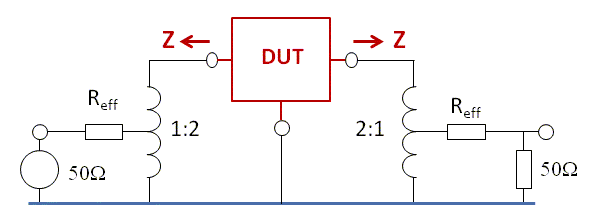
The performance does depend on the source and load impedances and so in some cases I modified the value of Reff in the jig to see the effect of this. The measured straight-through attenuation is shown for comparison in each case. Here are the results. I've done the first set of plots for a 4MHz span and a 400kHz span with source and load impedances Z of 720 ohms and the three units on the same scale.
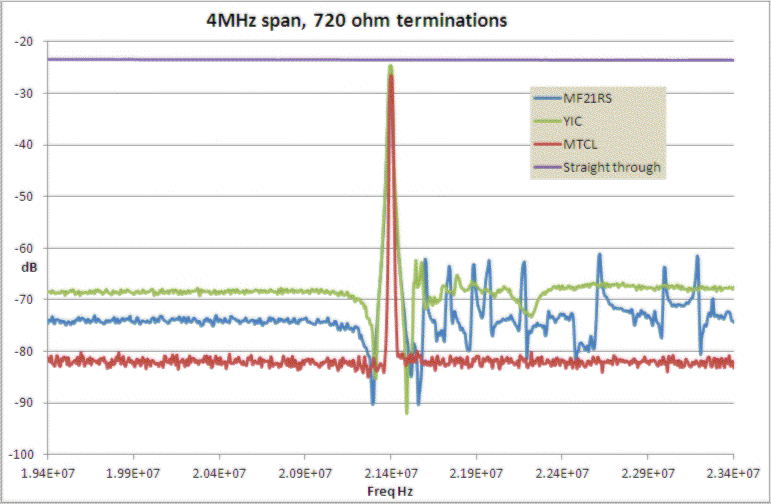
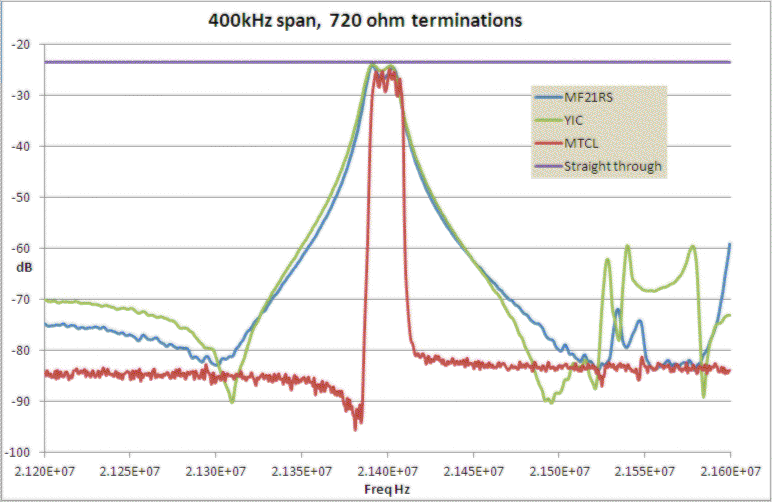
For the 8-pole filter, here are plots with different values of Z, straight-through attenuation normalized in each case.
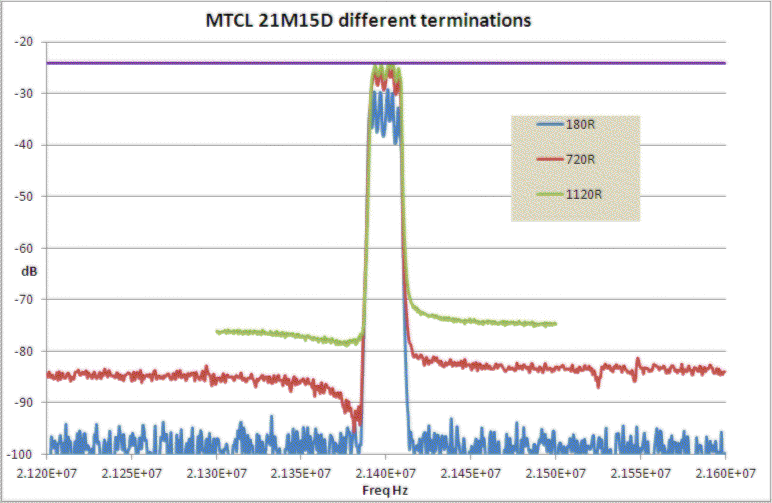
Cascading two of the YIC 2-pole units in series as per the attached schematic, to give a 4-pole response:
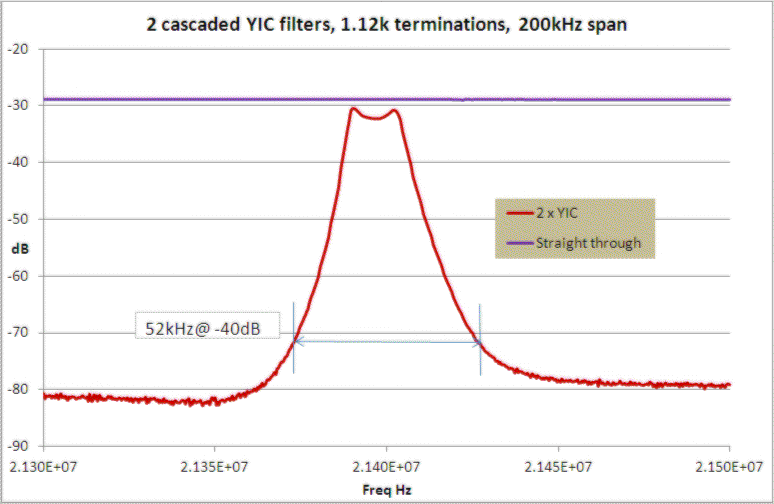

Thoughts to take away:
The two smaller 2-pole units had very similar in-band performance; out of band on the higher frequency side, the smaller surface mount one (only 1mm thick x 5 x 7mm) was more unruly, but not unacceptably so.
An 8-pole unit (the MTCL 21M15D) is much better than a 2-pole one, with an almost brick-wall response, but it's also much bigger (no surprises there).
The 8-pole unit has a larger in-band ripple, which gets less if you match it properly. That's also the case with the 2-pole units but it's less obvious.
All of these units need a high-ish terminating impedance (1 – 1.5kohm) to perform at their best, but if you do this, the in-band signal attenuation is low, only small numbers of dB.